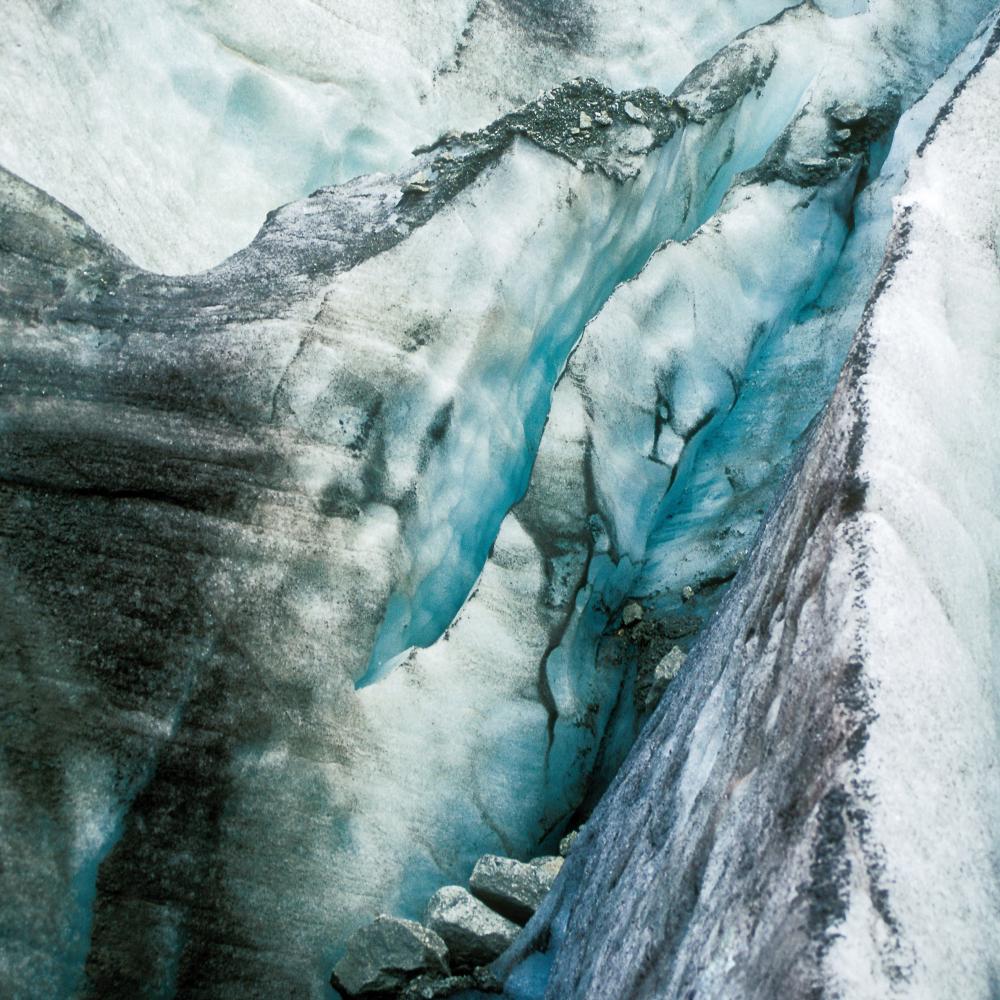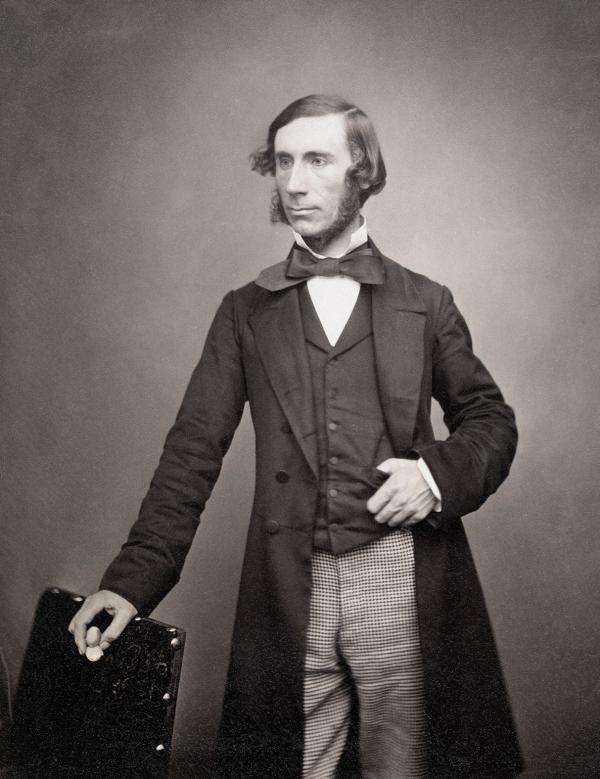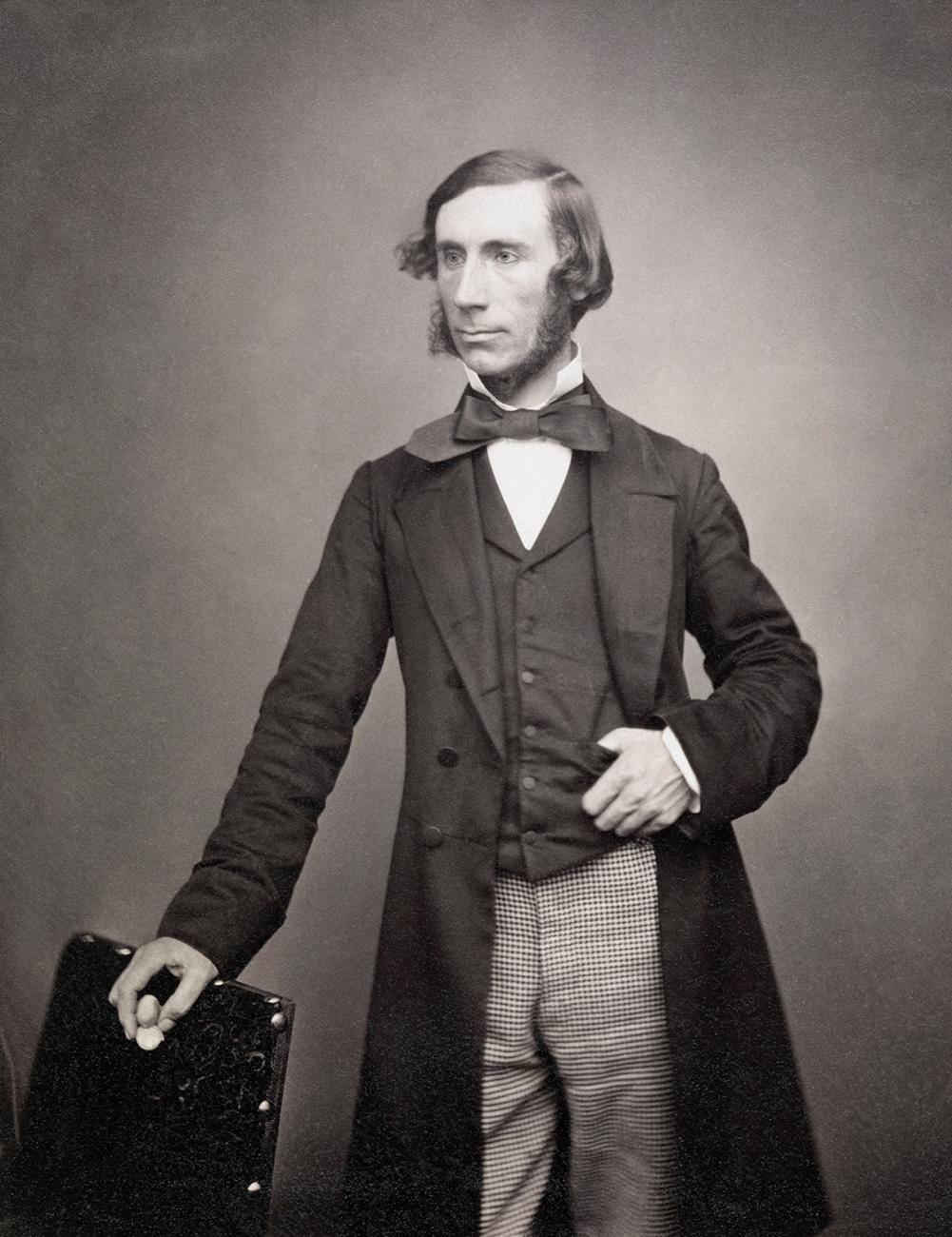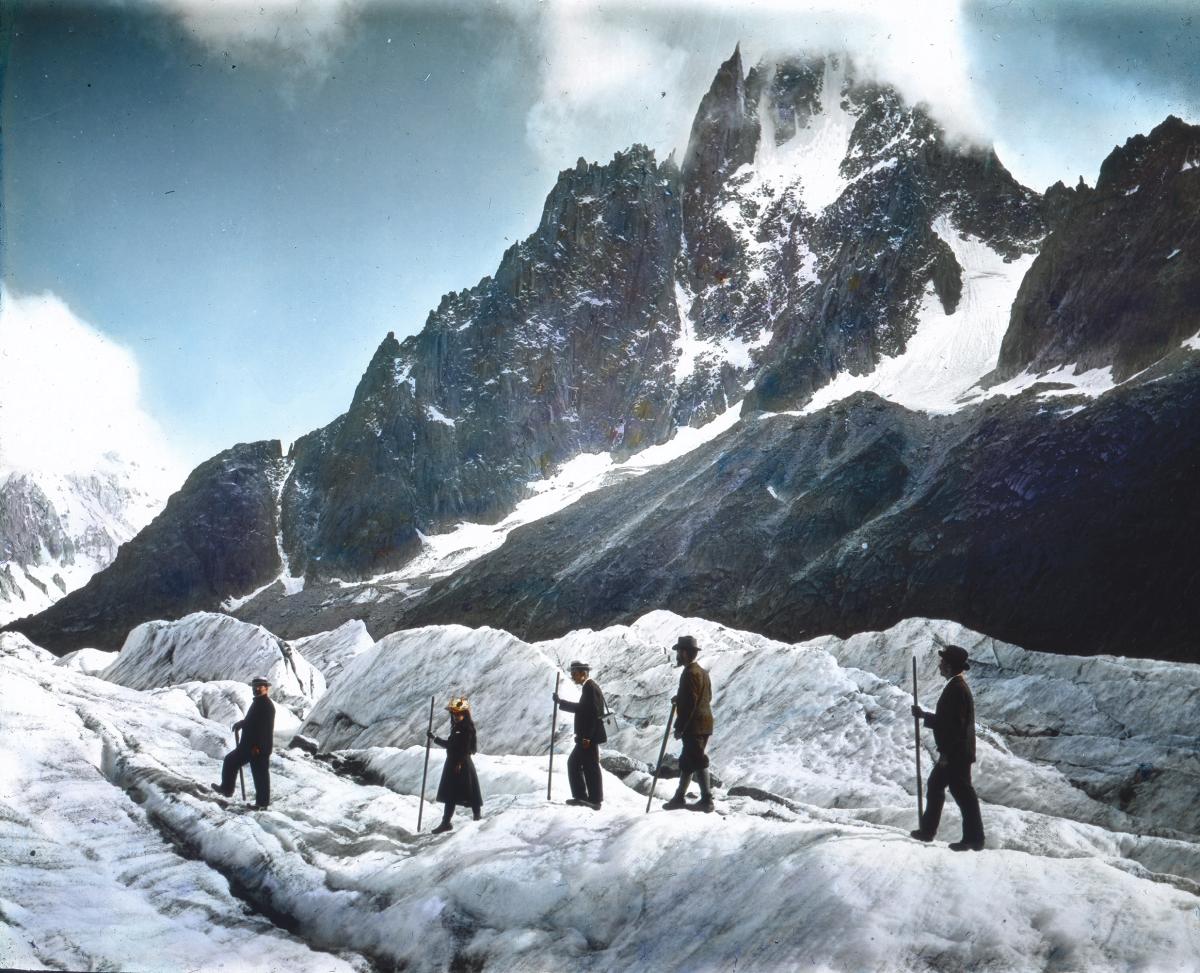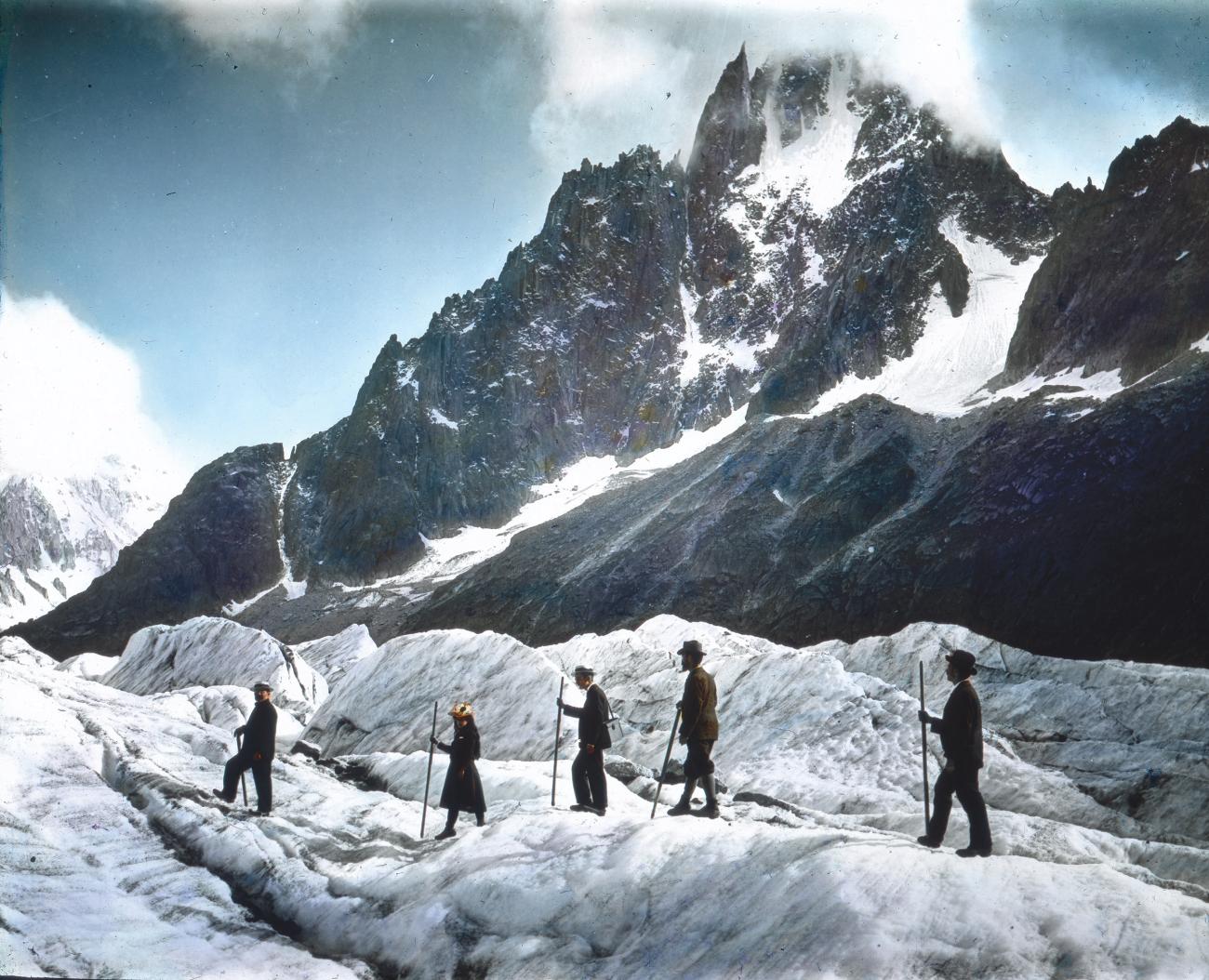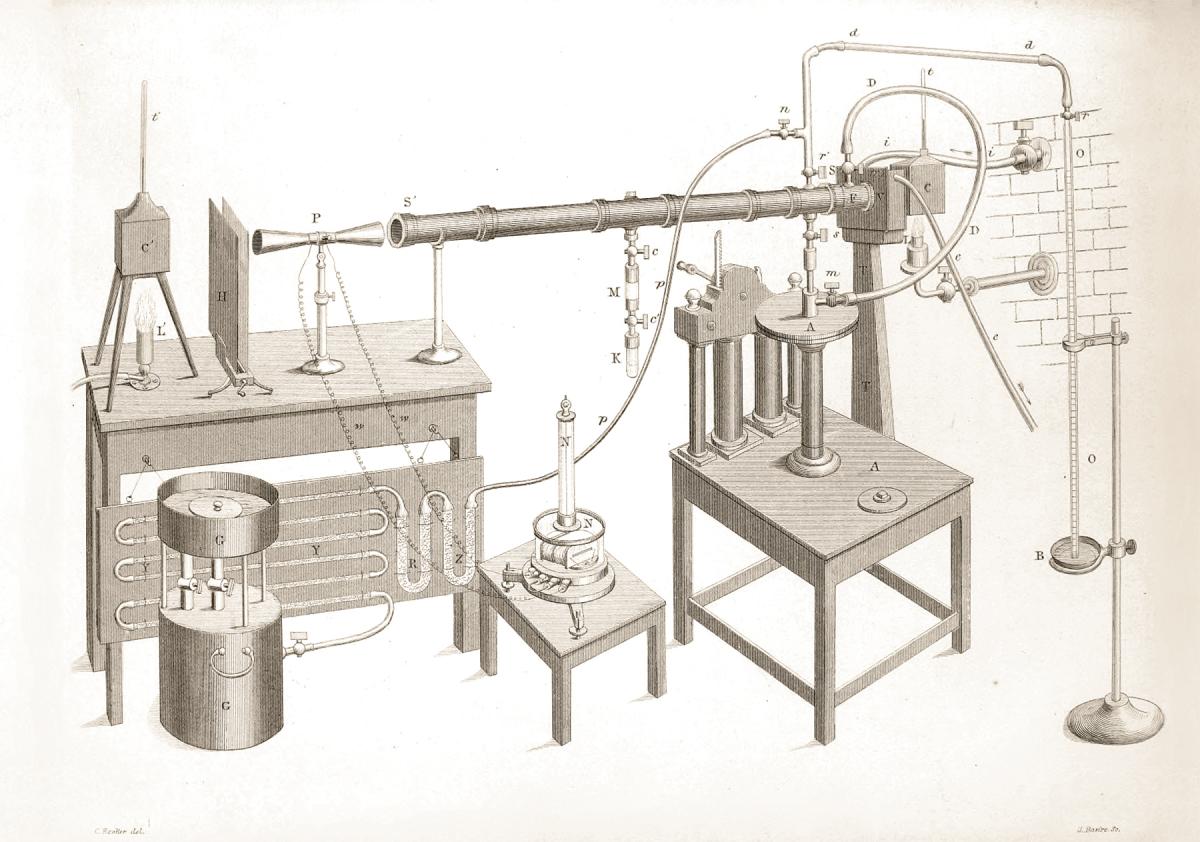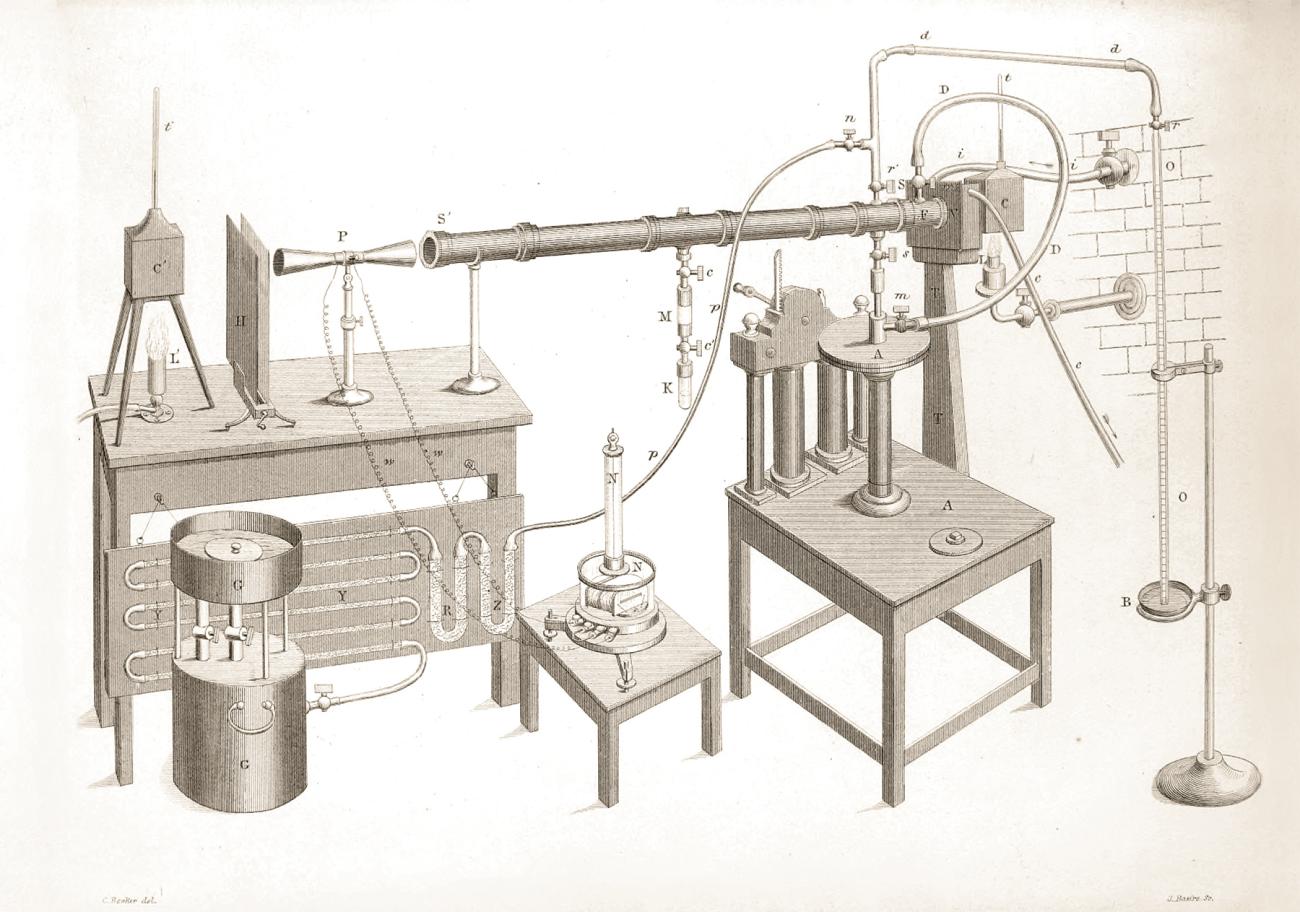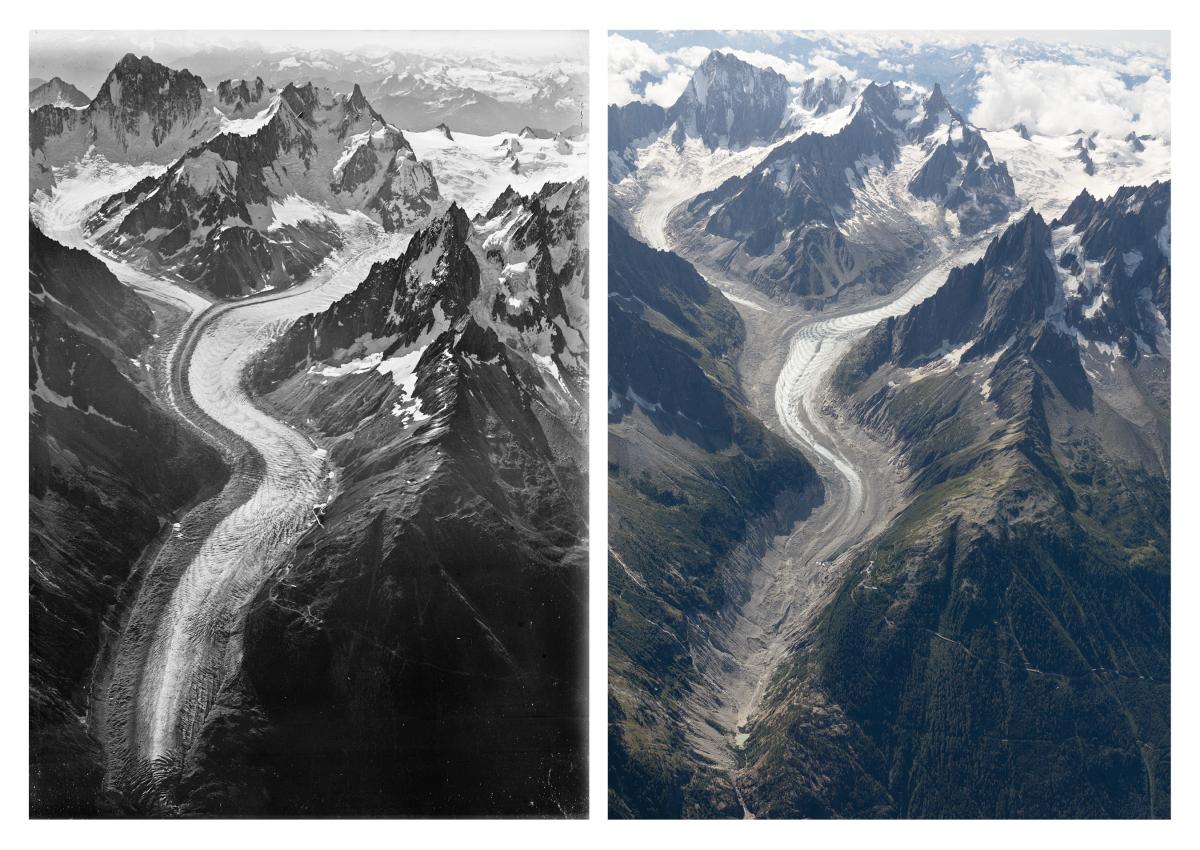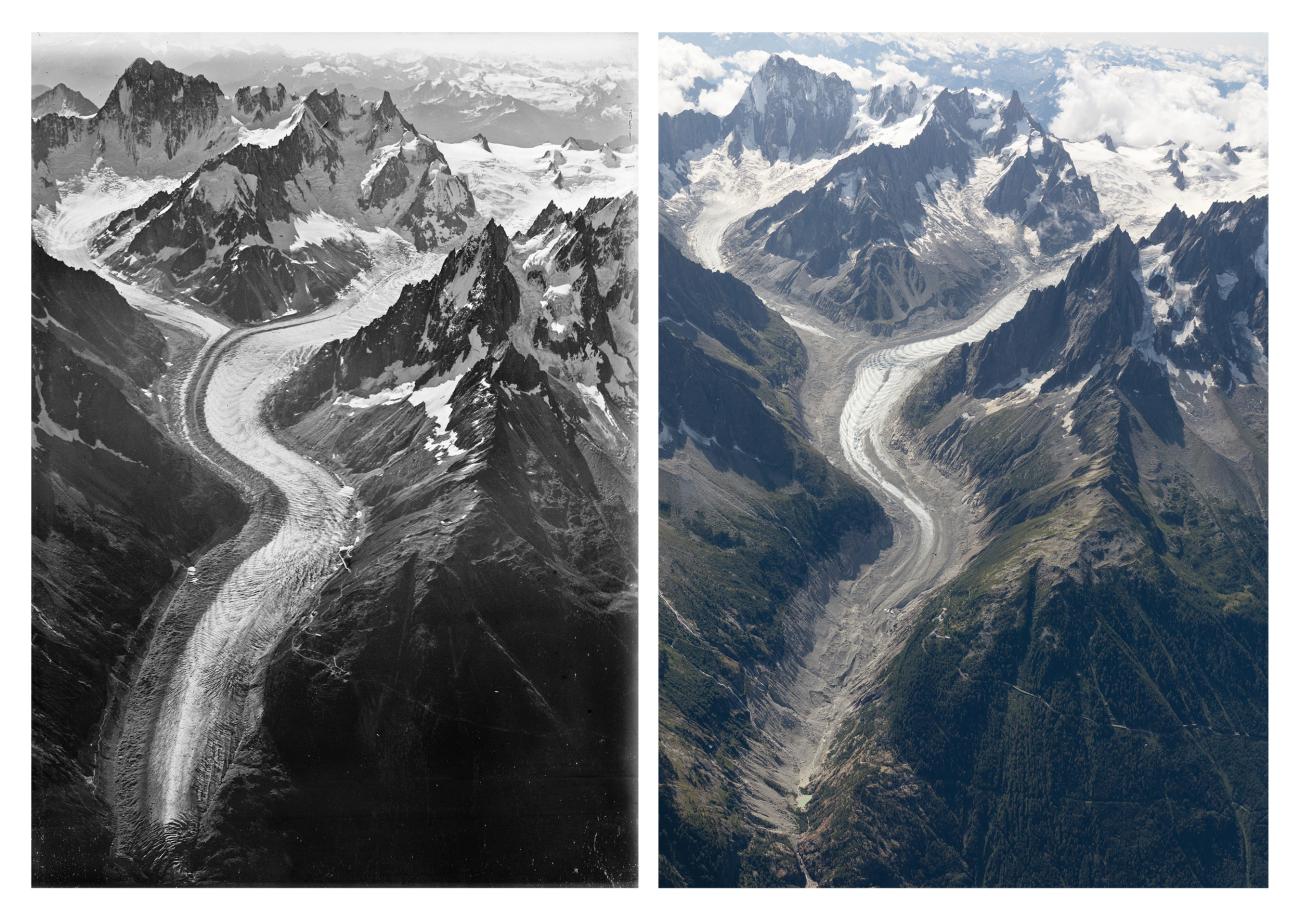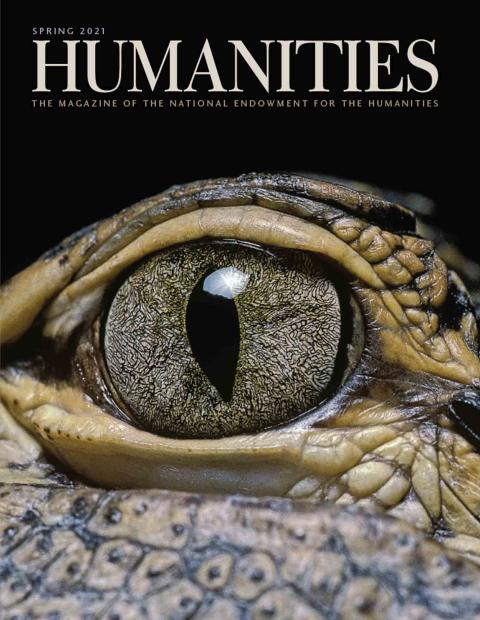Ambitious, charismatic, and eager to make his mark, John Tyndall burst onto the scientific scene in 1853 as a professor of natural philosophy at London’s prestigious Royal Institution.
The trim and energetic thirty-three-year-old performed scientific experiments in front of packed audiences of the city’s most fashionable people. A consummate showman, he staged what seemed like magic tricks but were actually portals into the complex and interconnected molecular machinery of the universe.
In Tyndall’s expert hands, tiny bubbles of air bloomed inside a piece of ice under the influence of invisible radiant heat. Sound waves caused so-called “sensitive” flames to dance. Light revealed the sinusoidal vibrations from a tuning fork.
Behind each of these dramatic feats were recent scientific discoveries revealing a remarkable unity in nature. Magnetism and electricity had been shown to be interchangeable by Tyndall’s predecessor, Michael Faraday. So too were heat and mechanical work, as proved by Julius von Mayer and James Joule.
Though he enjoyed the spotlight, Tyndall was rarely at ease. In fact, he was restless, not only for new spectacles but new fields in which to make his own great discoveries. In 1856, he found a landscape commensurate with his ambitions as he made his first trip to the Alps.
Spry as a goat, according to his friends, Tyndall became a daring and courageous proponent of the new sport of mountaineering. The combination of great physical exertion and great physical risk demanding his total vigilance proved a balm to Tyndall’s overactive mind.
In the Alps, under an ever-changing sky that provided a rich source of scientific questions, he found the perfect antidote to the insomnia and debilitating indigestion he suffered in London.
Of the scientific questions raised by the mountains, the one that gripped him first related to the exciting theory, recently put forward by Louis Agassiz, that vast sheets of ice had once covered the northern hemisphere. Evidence that glaciers had passed over the landscape was everywhere, chiseled across Europe in striated rocks, deeply carved valleys, and boulders deposited erratically in unlikely locations.
But Agassiz’s provocative theory raised as many questions as it answered. How exactly had ice sheets grown and moved across the vast distances of the northern hemisphere, as indicated by these traces? Tyndall set out to prove exactly how solid glaciers moved.
In a series of expeditions, Tyndall, along with several assistants, braved blizzard conditions to set a series of stakes in a row across the legendary Mer de Glace glacier in France. They returned over the course of several days to make precise measurements. These observations provided evidence that not only did glaciers move, but they could do so with surprising quickness. Just like rivers, they flowed faster in the center and at their outside curves. How was it, Tyndall wondered, that brittle ice could move so sinuously, as if it were treacle?
Back in London, in his basement lab at the Royal Institution, Tyndall conducted a series of ingenious experiments using blocks of ice. Compressing the ice in beautifully carved molds, he observed something truly remarkable: Under pressure the ice melted and refroze, then melted and froze again. This microscopic process (which Tyndall called regelation) could account for the seeming viscosity of glaciers.
In bringing the insights of the laboratory to bear on observations made in the field, Tyndall was applying the physics of the very small—molecules that shifted under pressure, causing ice to melt—to the motion of the very large: glaciers. This line of inquiry had once been restricted to the realm of descriptive geology, as in the work of Agassiz, Charles Lyell, and James Hutton. Now Tyndall was claiming it for physics. Precision instrumentation and careful experiments, he believed, could reveal molecular truths that were fundamental to all natural phenomena.
In this, Tyndall was suggesting not only what moved glaciers but what science itself should consist in. It was not simply a matter of arrogating to physics what geology had once claimed for its own. Along with like-minded scientists such as his friend Charles Darwin, Tyndall demanded for science a much more ambitious scope of explanation than it had previously been granted.
As Tyndall would put it in his controversial Belfast Address of 1874, scientists “claim, and we shall wrest from theology, the entire domain of cosmological theory.” Science would explain what previously only religion had articulated—the constitution of the universe and the special qualities of humankind. Doing so depended on the power of physics to show that all things were connected and could be explained via the actions of matter—molecules—in motion, and nothing more.
Some responded with outrage to the suggestion, fearing the amorality of a purely material worldview. Tyndall himself felt wonder, not anxiety, when he considered the power of matter to explain the myriad phenomena of nature, including that most intractable and ineffable of things, human consciousness.
Melancholy crept in only when Tyndall considered the inevitable end point of entropy, the heat death of the universe. Such a prospect, if inevitable, lay in the unimaginably distant future. It provided a frisson of apprehension more romantic than rational. It also left Tyndall, in the meantime, free to enjoy the show. Standing atop Alpine glaciers, he spent hours marveling at how a seemingly static ribbon of cloud trailing from a mountain peak was in fact a river of moisture, constantly forming and dissipating, similar to the ice at the glacier’s base that carried out its unseen regelative processes.
Inspired by his work on ice, Tyndall wondered about the effect of the sun’s heat on the atmosphere. In 1859, he spent months working in his laboratory to perfect an instrument that could discern small differences in the amount of radiant— or infrared—heat absorbed by different gases. A complicated arrangement of electrical measuring devices and a heating element connected to a metal tube allowed Tyndall to measure the different absorptive capacities of various gases. Most were negligible, but when he almost incidentally made a comparison between humid and dry air in his laboratory he discovered that water vapor had an astonishing capacity to absorb radiant heat. A similar discovery about carbon dioxide soon followed.
He immediately made the connection to the work of Agassiz and others, noting that small differences in these same gases in the atmosphere could “account for all the mutations of climate which the researches of geologists reveal.” Almost inadvertently, Tyndall had found a possible answer to the question raised by the theory of the ice ages: How do we account for dramatic changes in the past climate of the planet?
Changes in the concentration of certain key gases in the atmosphere, Tyndall’s research indicated, could be part of the answer. For this work, Tyndall is often considered to be a discoverer of a key feature of the greenhouse effect. (His work came three years after the work of Eunice Foote, who published the results of her experiments with similar findings, but who has until recently remained uncredited, thanks to her gender and lack of professional status.) But while Tyndall noted the relevance of his finding to the matter of past climatic change, his eyes were more firmly fixed on the molecular basis of that change, on how to use physical insights to understand everything. He cared less about the history of Earth and did not even consider the possibility that humans might one day alter the climate of the planet.
In this sense, Tyndall has less to teach us about climate change than we might think. In another sense, however, Tyndall has a lot to offer us today. In his life and work, he sought not only to link together the field and the laboratory but to show that the work of a gifted experimental and theoretical scientist included being a skilled communicator and storyteller. Facts alone have not proven sufficient to bridge the political divides that still frame so much thinking about the environment. Shared narratives—stories that encapsulate values to which we can all relate—may be needed to generate a collective vision of planetary stewardship. In his many books and articles, Tyndall shows how the scientific imagination itself can become a tool for adventure and common understanding. I can think of no better way to figure science into our lives, to break down barriers between experts and the public, than this active engagement with the contours of scientific thinking.
In his work, Tyndall focused largely, though not exclusively, on the physical rather than the biological. In a deeper sense, he considered the line between inanimate and living matter, between the molecules that made up the Alpine environment that so fascinated him and his own consciousness, to be illusory. Emotions were themselves physical. His feeling of awe in response to the clouds was just as physical as the cloudscape itself. The illusion was not that the clouds looked so lively, but that consciousness felt so distinctive. The ability to look and to respond to the world around us, to question our own inner desires and assumptions as Tyndall himself did so persistently, was simply an artifact of what remained a deep and abiding mystery: the emergence of consciousness from matter itself.
In a world where everything was reduced to mere matter, the apprehension of beauty presented a pleasurable paradox. Time and again, Tyndall was moved by what he called the prodigal beauty of nature. Such beauty was superabundant and, according to Tyndall, existed independently of the ability of humans to appreciate it (a detail that drew the particular ire of those who believed God had made the world beautiful for us). Each snowflake that fell on the mountain was exquisite, but the human capacity to appreciate such beauty could not be explained by the laws of physics which, seemingly paradoxically, gave rise to both the snowflakes and human beings themselves.
Occasionally, Tyndall allowed his thoughts to run beyond the present paradox of human consciousness and into the realm of the deep past and the deep future. In 1861, he traveled to the Alps on what he called a vacation tour. On this trip he completed the mountaineering feat for which he is most celebrated, a daring and dangerous first ascent of the Weisshorn.
Examined with properly prepared eyes, the Alpine landscape was a record of the past laid bare, as Agassiz’s ice theory had indicated. “Looking at these charactered crags,” he continued, “one’s thoughts involuntarily revert to the ancient days, and from a few scattered observations we restore in idea a state of things which had disappeared from the world before the development of man.”
Here Tyndall considers not only the spectacular ice ages of the past but the contemporary spectacle of mankind’s ability to reconstruct that past imaginatively. His use of the word “involuntary” is telling. For him, the imaginative act of reconstruction is as natural and as automatic as his passionate, emotional response to the landscape. Tyndall’s tenses become interestingly ambiguous as he considers the implications of humanity’s ability to reconstruct the past. “Who will take the step which shall connect the faculties of the human mind with the physics of the human brain?” he asks, suggesting that this linkage has not yet been accomplished and that even greater human qualities (ESP, perhaps?) may lie “locked like latent heat in ancient organic nature.”
Contemporary neuroscientists use powerful techniques to probe the seat of consciousness in the brain, though they have yet to locate it. The mind-brain split that provoked Tyndall continues to mystify us. In the meantime, we find ourselves considering another seemingly paradoxical disconnect rooted in our sense of humans as exceptional.
Today we lament the mismatch between our exceptional human ability to intervene in the world—including the climate—and our inability to understand the effects of our interventions and to work together to fix the damage we have done.
For all of Tyndall’s restless striving not only for knowledge but acclaim, for all his need for endless motion to counteract the disquieting revving of his internal thoughts, he always made time to observe the natural world in front of him and react to it. “In the application of her own principles,” Tyndall wrote, “nature often transcends the human imagination; her acts are bolder than our predictions.” This message has resonances for us today if we are only prepared to listen.

